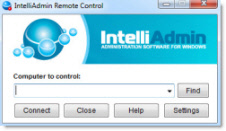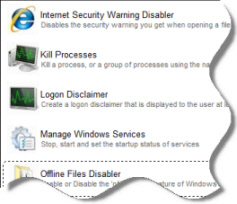Exchange 2010 - store.exe IP traffic
My understanding was that msexchangerepl.exe was responsible for database seeding and replicating in a multi-node environment. However, I have noticed that
store.exe transfers an immense amount of data as well between servers in the DAG.
What is this process doing on the network?
Thanks.
Edit for clarification. This traffic is going between a server that is running as a CAS and DAG and another server that is running only as a DAG with no active mailbox databases. I would expect that the majority of data between these two servers
would just be standard DAG replication from msexchangerepl.exe.
July 6th, 2012 3:25pm
In Exchange 2007, the Microsoft Exchange Replication service was responsible for replaying logs into passive database copies. When the passive copy was
activated, the database cache that had been built by the Microsoft Exchange Replication service as a result of replay activity would be lost when the Microsoft Exchange Information Store service would mount the database. This put the database cache in a state
known as a cold state. The database
cache, which is used to cache read/write operations, is small in size (cold) during this period. Therefore, it has a significantly diminished ability to reduce read I/O operations. In Exchange 2010, the passive copy replay functionality previously performed
by the Microsoft Exchange Replication service has been moved into the Microsoft Exchange Information Store service. As a result, a warm database cache is present and immediately available for use after a failover or switchover occurs.
http://technet.microsoft.com/en-us/library/dd638137.aspxSatheshwaran Manoharan | Exchange 2003/2007/2010 | Blog:http://www.careexchange.in | Please mark it as an answer if it really helps you
Free Windows Admin Tool Kit Click here and download it now
July 7th, 2012 1:04am
I'm not sure that explains why the data store is actually transmitting data over the network. That seems to say that once a server with a passive database receives replication data, it then sends it to the data store for write I/O caching instead of
using a cache within the local replication service.
I need to know why store.exe is transferring data between DAG nodes and how to isolate that traffic for prioritization.
July 7th, 2012 3:49pm
if you are looking to isolate traffic.
Replication data passes by only 64327 port
check if that helps
Satheshwaran Manoharan | Exchange 2003/2007/2010 | Blog:http://www.careexchange.in | Please mark it as an answer if it really helps you
Free Windows Admin Tool Kit Click here and download it now
July 7th, 2012 7:14pm
Thanks, I tried 64327 but there is also a significant amount of data passing from other ports between the servers. On a netstat it says these ports are associated with store.exe. I am trying to determine what this traffic is and how
to isolate it as well. Could it be public folders?
July 7th, 2012 8:24pm
See http://technet.microsoft.com/en-us/library/bb331973.aspx
Hope it is helpful.Fiona Liao
TechNet Community Support
Free Windows Admin Tool Kit Click here and download it now
July 10th, 2012 3:16am
Is this traffic SMB on port 445? I have noticed a massive amount of traffic between DAG nodes, this was identified as Content Indexing traffic by Microsoft Support. I've never found it documented anywhere. The source was system so may not be the one you
are looking at but you can use netmon to find out.
Use netmon to capture just smb on one of the DAG nodes, This command line just captures one minutes worth:
nmcap /network * /capture tcp.port == 445 /file %computername%.chn:200M /terminatewhen /timeafter 60 sec /captureprocesses
with the captureprocess switch you can see which exe is generating the traffic. You can change the port number to suit yourself.
In my case I saw lots of traffic going to between DAG nodes, this had broken in my case and was causing WAN utilisation problems with over 70GB of SMB data going in a 2 hour period with empty databases. Cause was suggested as being the empty
databases, fix was to recreate and add a dummy mailbox to each. This sorted out the spike but there is still a large proportion of the replication traffic using SMB on port 445 (content indexing) while the logs themselves go over port 64327
as previously mentioned.
July 10th, 2012 9:37am
Is this traffic SMB on port 445? I have noticed a massive amount of traffic between DAG nodes, this was identified as Content Indexing traffic by Microsoft Support. I've never found it documented anywhere. The source was system so may not be the one you
are looking at but you can use netmon to find out.
Use netmon to capture just smb on one of the DAG nodes, This command line just captures one minutes worth:
nmcap /network * /capture tcp.port == 445 /file %computername%.chn:200M /terminatewhen /timeafter 60 sec /captureprocesses
with the captureprocess switch you can see which exe is generating the traffic. You can change the port number to suit yourself.
In my case I saw lots of traffic going to between DAG nodes, this had broken in my case and was causing WAN utilisation problems with over 70GB of SMB data going in a 2 hour period with empty databases. Cause was suggested as being the empty
databases, fix was to recreate and add a dummy mailbox to each. This sorted out the spike but there is still a large proportion of the replication traffic using SMB on port 445 (content indexing) while the logs themselves go over port 64327
as previously mentioned.
Will, I believe we found the same thing.
I SPAN'ed all the ports on the switch that the servers are connected do and did a passive packet capture for roughly 2 minutes. This was the top data between the local Exchange servers and the far end Exchange server at our other site. (Node-1
is local, Node-2 is at the other site)
Address A
Port A
Owning Application
Address B
Port
Owning Application
Packets
Bytes
Node-1
64327
msexchangerepl.exe
Node-2
50692
msexchangerepl.exe
10862
9.94 MB
Node-1
64327
msexchangerepl.exe
Node-2
46170
msexchangerepl.exe
8213
7 MB
Node-1
64327
msexchangerepl.exe
Node-2
50697
msexchangerepl.exe
7870
7 MB
Node-1
64327
msexchangerepl.exe
Node-2
50665
msexchangerepl.exe
7485
7 MB
Node-1
64327
msexchangerepl.exe
Node-2
50684
msexchangerepl.exe
7283
7 MB
Node-2
50643
Node-1
445
10204
5 MB
Node-1
64327
msexchangerepl.exe
Node-2
50698
msexchangerepl.exe
5547
5 MB
Node-2
50652
store.exe
Node-1
49903
Microsoft.Exchange.Search.ExSearch.exe
6494
3 MB
Node-2
50679
store.exe
Node-1
49903
MsFTEFD.exe
3247
2 MB
Node-2
50680
store.exe
Node-1
49903
MsFTEFD.exe
2443
1.8 MB
Node-2
50653
store.exe
Node-1
49903
Microsoft.Exchange.Search.ExSearch.exe
2369
0.7 MB
Node-1
49903
store.exe
Node-2
29731
MsFTEFD.exe
944
0.7 MB
Node-2
50681
Node-1
49903
msexchangerepl.exe
718
0.6 MB
Node-2
50682
Node-1
49903
msexchangerepl.exe
293
0.2 MB
Node-2
50654
store.exe
Node-1
49903
Microsoft.Exchange.Search.ExSearch.exe
723
0.2 MB
A lot of it appears to be replication, then there is a 443 stream. While 5MB does not seem like a lot compared to replication, over a 2 minute period that is using more than a full T1. This is in addition to these store.exe processes that also
appear to be part of the Exchange search indexer.
I found a some brief documentation that mentions this, but it still doesn't add up.
http://technet.microsoft.com/en-us/library/bb232132.aspx
In organizations that have a database availability group (DAG), during the seeding process,DAG members with a passive mailbox database copy replicate the content index catalog fromthe DAG member that has the active mailbox database copy. The content index is typically10 percent the size of the mailbox database. After initial seeding, the server with thepassive database copy gets message data from the server with the active database andperforms content indexing locally. The bandwidth used for copying message content forindexing is in addition to the bandwidth used for replication of transaction logs.When planning a high availability deployment, you must consider the bandwidth usedby Exchange Search.
Some other website specified that this type of replication occurs over microsoft-ds (445) but I am not able to find it right now. What is strange is that during the time of capture we were not doing a database seed, just normal log shipping.
Free Windows Admin Tool Kit Click here and download it now
July 11th, 2012 10:19am
you might want to take al look at this blog:
http://blogs.technet.com/b/exchange/archive/2011/12/14/database-maintenance-in-exchange-2010.aspx
Especially Database Checksumming: it reads ~5Mb/s for each actively scanning database (both active and passive database).
If you monitor your mailbox servers (resmon.exe) you'll see the store.exe proces causing the Read IO / network load because it's reading large chunks of data from the databases for checksumming.
Regards,
Pascal
July 21st, 2012 2:23pm
you might want to take al look at this blog:
http://blogs.technet.com/b/exchange/archive/2011/12/14/database-maintenance-in-exchange-2010.aspx
Especially Database Checksumming: it reads ~5Mb/s for each actively scanning database (both active and passive database).
If you monitor your mailbox servers (resmon.exe) you'll see the store.exe proces causing the Read IO / network load because it's reading large chunks of data from the databases for checksumming.
Regards,
Pascal
Free Windows Admin Tool Kit Click here and download it now
July 21st, 2012 2:26pm


